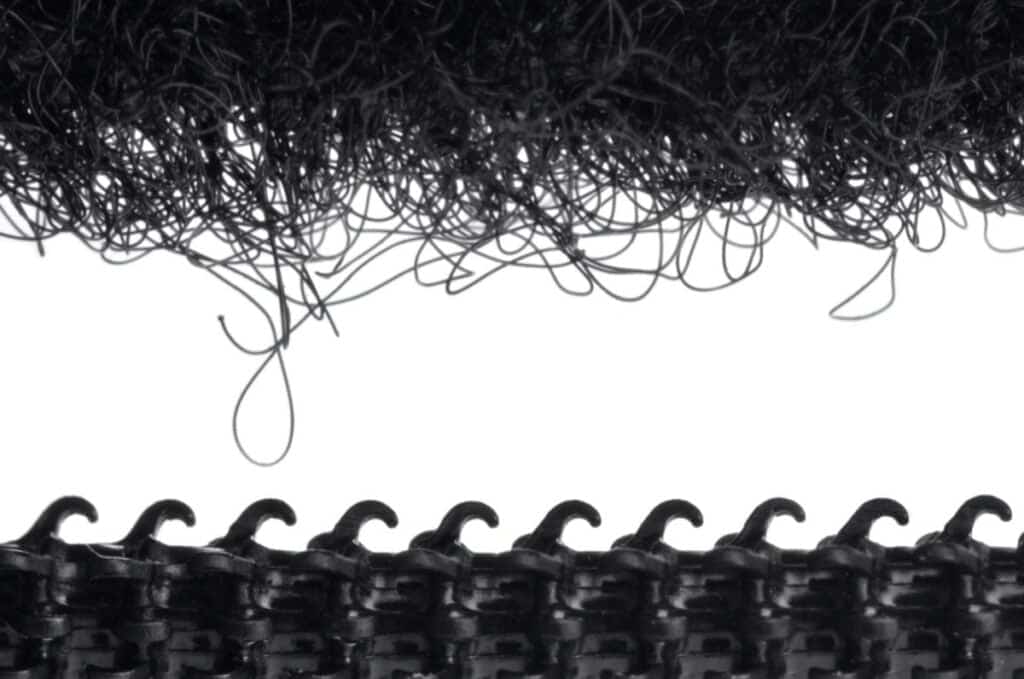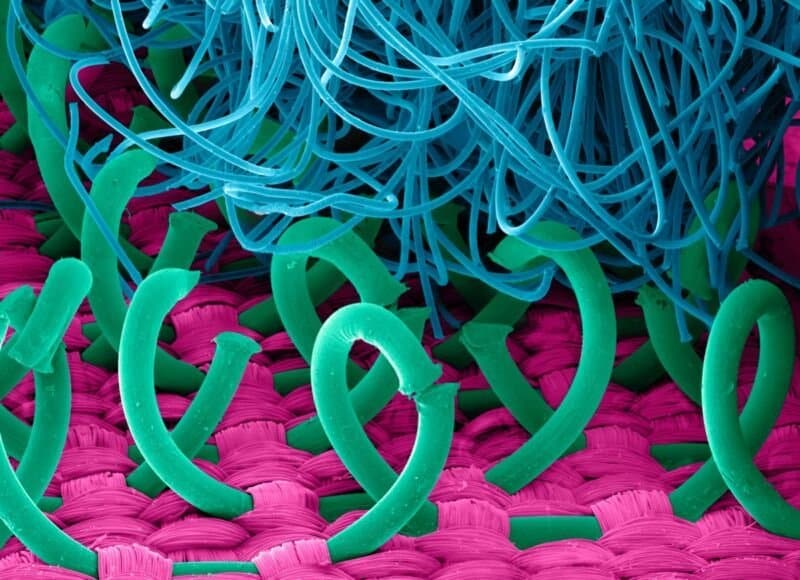Researchers at the Italian Institute of Technology have developed a soft, biodegradable and soluble Velcro based on the micro-ring structure of the leaves of a plant called “handstick”.
The team used the newly made material to build small devices that monitor the health of cultivated plants, to provide them with medicine and nutrition as needed. All within the scope of a research project published in Communications Materials magazine.
Velcro, birth of a small star

The creator of Velcro was a Swiss engineer named George de Mestral. In 1948, de Mestral took a two-week vacation from work to go hunting: while hiking with his Irish pointer in the Jura Mountains, he was tormented by wild burdock seeds. Those unfortunates clung inexorably to both his clothes and the dog's fur. Tenacious, very tenacious.
To the point that De Mestral wanted to examine some of them under the microscope.
He noticed that the outside of each seed was covered in hundreds of tiny hooks that hooked onto loops of wire or, in the dog's case, fur. And an idea came to him. Velcro was born (from the French words VELours, “velvet”, and CROchet, “hook”).
Velcro, introduced in 1960, was not an immediate success, but NASA found it useful for astronauts. From that moment his rise began until he sold 60 million meters a year: the good De Mestral, when he died in 1990, was a multi-millionaire.
Today it is practically everywhere
Velcro is used in many things such as shoes, backpacks, wallets, jackets and straps. They even used it to help a human heart stay together during the first artificial heart transplant. Since Velcro is made of nylon, the idea of making a biodegradable version is fantastic. How was it developed?
The scientist Isabella Fiorello and his colleagues wanted to find new ways to monitor plants. They wondered if there was a way to attach their devices to the leaves without damaging them. They had two options: bonding them chemically or using microneedle patches.
Eventually they found inspiration in the common herbaceous plant (gallium aparine). It can form dense tangles on the ground, and although it grows to nearly 2 meters (6 feet), it cannot stand up on its own and uses other plants for support. For this it relies on a micro-hook anchoring mechanism.
The Italian team studied this small structure very closely, then used a 3D printer to create artificial versions of it. “Natural” Velcro has been tested with different materials, including photosensitive and biodegradable isomalt-based ones (yes, the one also used for cakes). It worked.

A biodegradable velcro to help plants
As an initial application, the team designed a device that can penetrate a plant's cuticle with minimal invasiveness, thus allowing the plant to be monitored and treated if necessary. The micro “Velcro” hooks with isomalt attach to the vascular system of the leaves and then dissolve inside, because isomalt is soluble.
The experiments showed that artificial micro-needles could be used as a “smart release” patch, to use as little pesticide as possible. Biodegradable Velcro patches dissolve once applied, so there's no waste.
The team also printed hooks made of a photosensitive resin and assembled them together with light, temperature and humidity sensors to create smart clips. These clips attach to individual leaves to transmit data wirelessly using custom software.
The prototype was able to measure up to 50 days in windy conditions. The device can be used for small-scale or larger-scale botanical applications, such as farmers deploying many devices to better map and monitor large growing areas.
The next steps
Dr. Fiorello's team hasn't just developed a biodegradable velcro, I think I have clarified this. But it also did more than the advanced plant monitoring and feeding system. It has also developed a kind of micro that can move on the surface of the leaf in small steps. It moves just like a plant would. A mechanism similar to those previously demonstrated in the SpinyBot of Stanford University, and in the CLASH robot of Berkeley, capable of climbing on suspended and loose cloth surfaces, such as curtains.
The Italian one, however, has something more. “To the best of our knowledge, this is the first plant-inspired proof-of-concept machine capable of moving on a leaf,” the authors write. For this, however, it will be necessary to overcome obstacles: first of all, understand how to make such a robot work in atmospheric conditions such as external ones.


